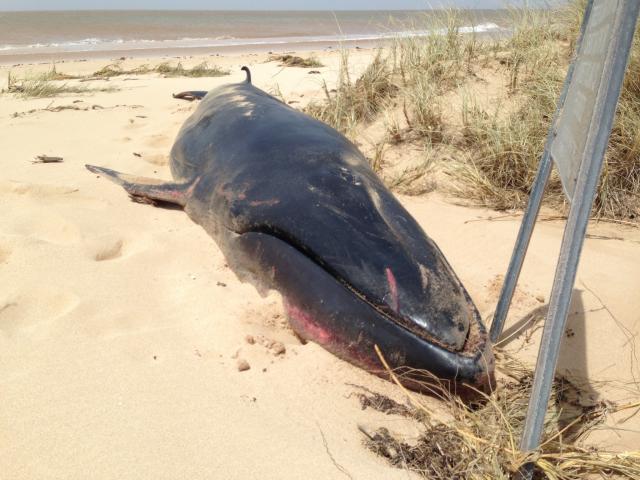Omura's whale find a major scientific discovery
 0 Comment(s)
0 Comment(s) Print
Print E-mail China.org.cn, April 15, 2015
E-mail China.org.cn, April 15, 2015
|
A dead Omura's whale was found in mid-March on a remote beach near the township of Exmouth in Australia following Tropical Cyclone Olwyn. [Photo/Parks and Wildlife] |
A dead whale on an Exmouth beach has proved an exciting discovery for Western Australia.
The whale, identified as an Omura's whale, is the first record and sighting of this species in WA and only the second nationally.
Environment Minister Albert Jacob said the dead whale was found in mid-March on a remote beach near the township of Exmouth following Tropical Cyclone Olwyn.
"This find is highly significant for whale scientists in Western Australia and researchers globally because there have not been many recorded sightings of this species so very little is known about it," he said.
"Omura's whale was only described in scientific journals for the first time in 2003 and is apparently restricted to tropical and subtropical waters. The knowledge we gain from this whale will help to improve field identification guides to better understand the whale's regional distribution. Scientists know a fair bit about many whale species but this exciting discovery shows there is still so much more to learn in our oceans," he explained.
The specimen was reported after it was observed above the high water mark following the cyclone's storm surge.
But identifying the 5.68 metre juvenile female was difficult for Department of Parks and Wildlife staff and results proved inconclusive. DNA profiling by a Parks and Wildlife scientist confirmed the animal was an Omura's whale (Balaenoptera omurai), normally found well to the north of Australia in the western Pacific and eastern Indian oceans.
Omura's whales have a streamlined and sleek body shape and several unique skeletal features distinguishing them from other whales, including 53 vertebrae and four digits on each pectoral fin (the third digit is missing).
Its external appearance can lead to confusion and it is often incorrectly identified as a small Fin whale or Bryde’s whale. The carcass has been buried and the skeleton will be recovered in a few years for further scientific investigation and possibly for public display in museums.







Go to Forum >>0 Comment(s)